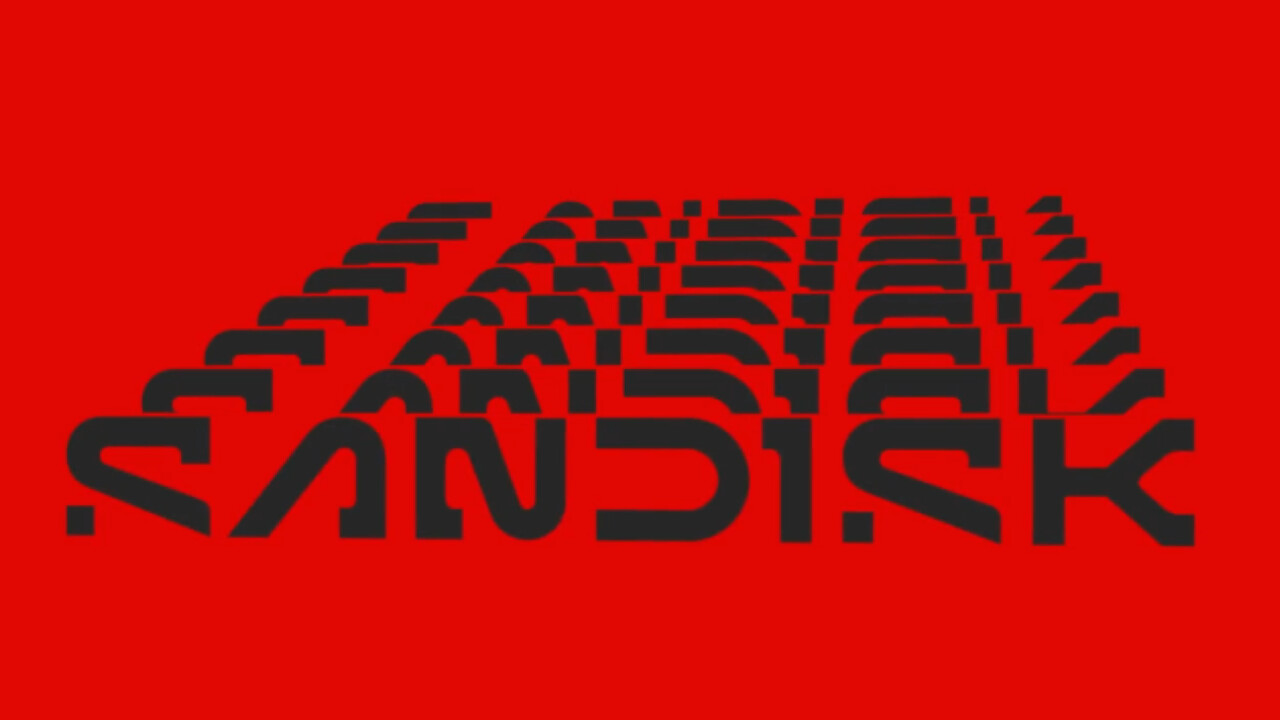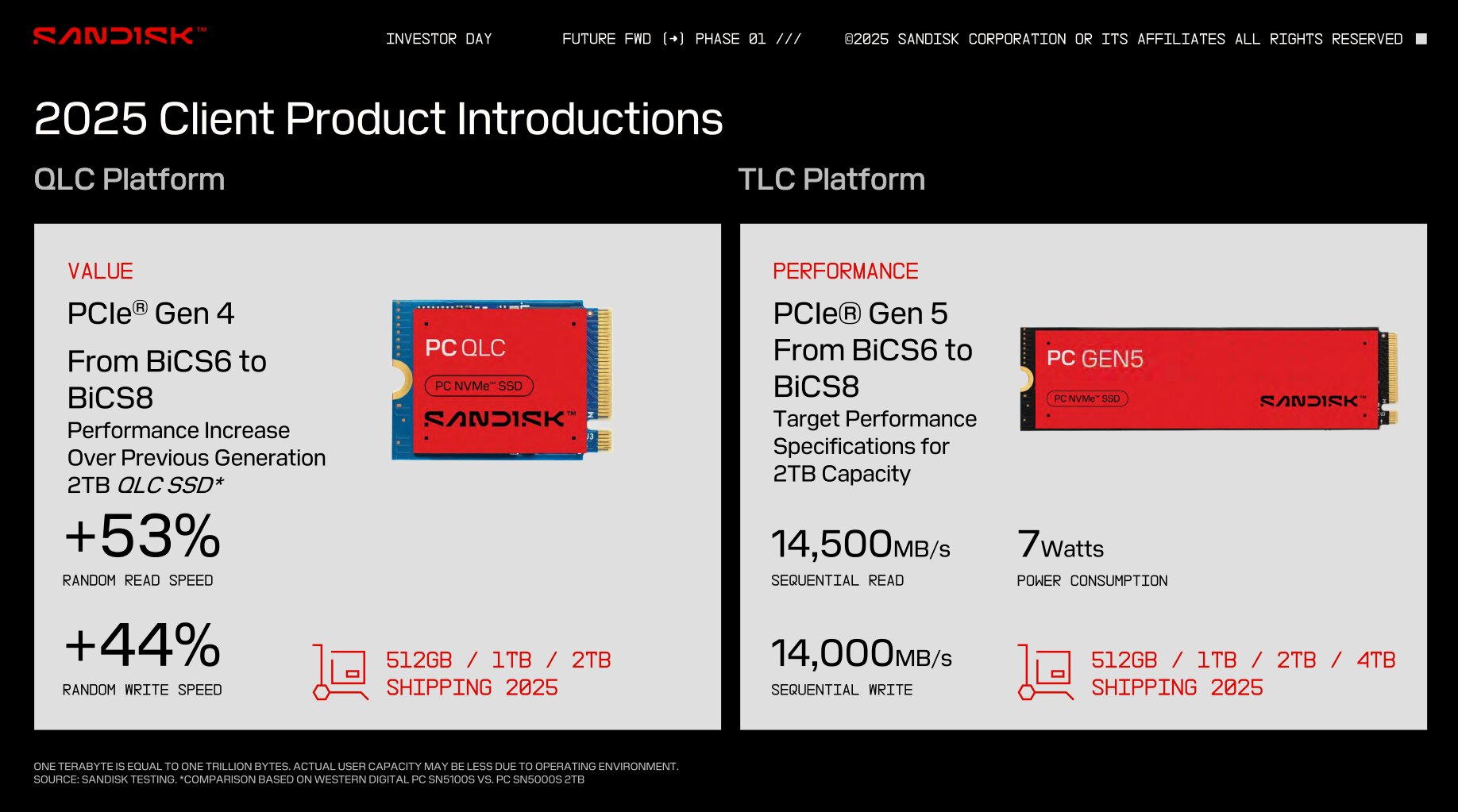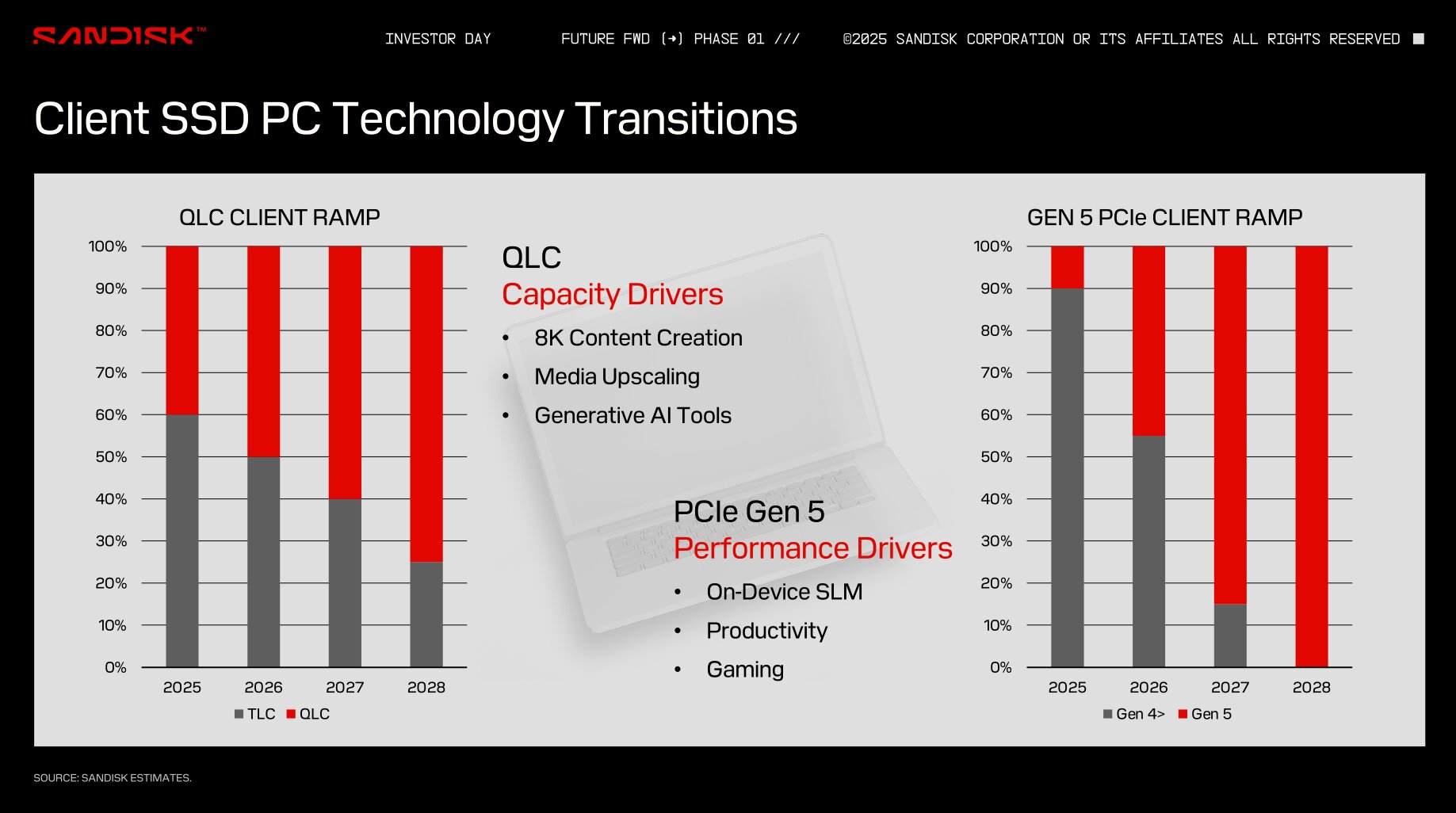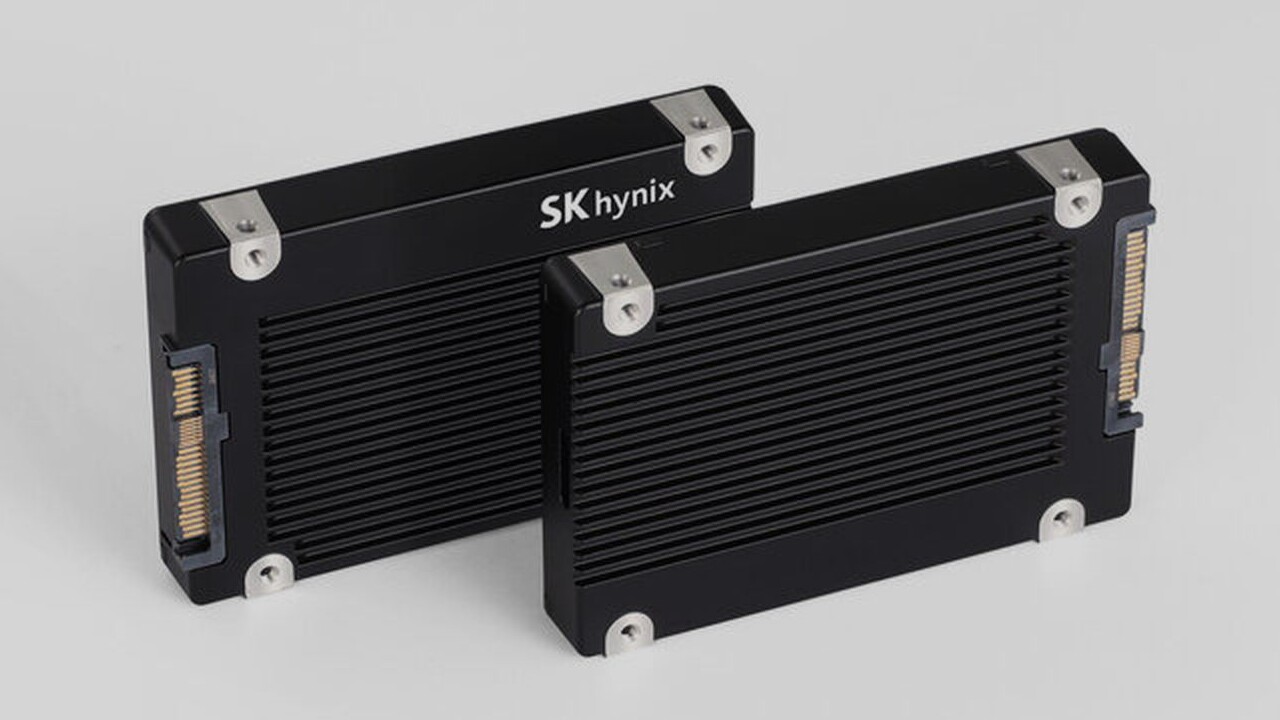Efficient PCIE-5.0 SSD: Sandisk delivers 14.5 GB/s at just 7 watts in Q2 8 comments

Image: Sanisk
Since the spin-off of the SSD division is imminent, many Western digital SSDs are once again called Sandisk. This also applies to the efficient PCIE 5.0 SSD in M.2 format, which Western had announced digitally. This must be delivered from the second trimester. Up to 14.5 GB/s at just 7 watts is promised.
Last summer, Western Digital showed off its upcoming PCIE 5.0 SSD for client systems for the Flash Memory Summit. The efficiency got you noticed, as the top model got 15 GB/s and 2 million PIO at less than 7 watts in the notebook.
With closer proximity to the market launch, it becomes slightly lower at 14.5 GB/s when reading and 14 GB/s when writing. The reader rate corresponds roughly to the current maximum on the market, the write rate would even be the highest. Instead of the Western digital logo, the new Sandisk logo can now be seen.
 The new Sandisk SSDs with BICS8 should be delivered from Q2 2025 (photo: Sandisk)
The new Sandisk SSDs with BICS8 should be delivered from Q2 2025 (photo: Sandisk)
SSDs with Phison E26 controllers such as the Crucial T705 (test) also max out at 14.5 GB/s when reading, but only max out at 12.7 GB/s when writing. For this performance you need 12 watts of power. However, it must first be shown whether the 7 watts at Sandisk are more average or maximum. The SSDs expected in this country with the SM2508 controller from Silicon Motion, which are expected in Germany, should act similarly “sparingly”, which should achieve a similar level with regard to throughput and power consumption.
During the presentation at the Sandisk Investor Day 2025, Khurram Ismail, Head of Engineering and Product Management at Sandisk, said that the as yet unnamed Sandisk SSD with PCIe 5.0 is expected to be delivered in the second quarter. Models with storage capacities of 512 GB, 1 TB, 2 TB and 4 TB are planned. The memory is the new BICS8 flash in the TLC variant with 3 bits per cell.
SN5100S MIT QLC
Also in the second quarter of 2025, a new SSD series with QLC memory (4 bits per cell) is to be delivered, which, according to a footnote, bears the name PC SN5100S. The compact M.2-2230 form factor is shown, which is thus available with 512 GB, 1 TB and 2 TB as memory options. Here too, the change from BICS6 to BICS8, only in the QLC variant. Compared to the previous generation (SN5000), the new SN5100 is expected to increase by 53% or 44% when reading and writing.
QLC will soon overtake TLC?
In client SSDs, Sandisk expects the proportion of QLC to increase to 40% this year. In 2026, client SSDs with QLC and TLC would be balanced. As early as 2028, Sandisk expects more than 70% of delivered client SSDs to be based on QLC. It is not clear when it comes to the graph, whether Sankisk with its estimate is only concerned with its own products or the entire industry.
 QLC and PCIe 5.0 as a trend (image: Sandisk)
QLC and PCIe 5.0 as a trend (image: Sandisk)
PCIe 5.0 sees Sandisk again this year as a niche with only 10% share of client SSDs. But nearly half are expected to be equipped with the faster interface in the coming year, and Sandisk expects the full switch from PCIe 4.0 to PCIe 5.0 by 2028.
Topics: Flash Memory M.2 NVME PCIE 5.0 SANDISK SSD STORAGE WESTERNE Western Digital Source: Sandisk

Alice guides you through the best storage solutions, from ultra-fast SSDs to secure cloud options.

